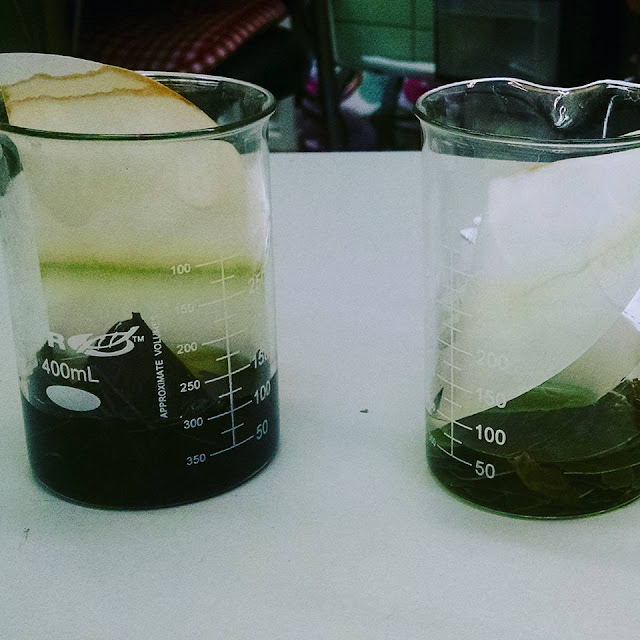Through the years, I've found two good mentor texts to use that address this concept. Both are from Scholastic Books, and both do a great job taking a complex subject and bringing it down to an elementary level of understanding.
Both books simply introduce the children to the life cycle of a leaf, from a bud in winter, to a new leaf in spring, to a mature leaf in summer, and then a fall leaf, changing color and falling off the tree.
They also introduce the children to the job of a leaf, which is to take air, water, and sunlight, mix it with chlorophyll, and make tree food! There is not a long, complex explanation of all the chemistry involved -- we can save that for later on in their educational career -- but just an elementary level explanation of the job of a leaf.
The books talk about how the chlorophyll the leaf uses to make tree food is green, and it covers up the natural color of the leaf. I use my shirt and pants as an example. I show them where my shirt has covered up my pants, so they only see the color of my shirt. But when I lift my shirt, when my shirt goes away, they can see the actual color of my pants.
It's the same with the chlorophyll in the plants. When fall comes, and there is less sunlight in a day, the leaves know it is time to stop making plant food. The chlorophyll is not needed anymore, and gradually the green color goes away, letting the golds and yellows and reds and oranges of the leaves show.
Then we do a science experiment using rubbing alcohol, coffee filters, and crushed up leaves. The children each bring a leaf in to school. The children draw a picture of their leaf on their experiment recording sheet.
Then I put a bit of rubbing alcohol in each jar. I stop there, and the children record this step in the "first" box.
We sort the leaves out by their colors and tear and crush the leaves up and put them in a glass jar. I make sure the rubbing alcohol covers the leaves, cut the filter into strips, then place the strips in the glass jars. The children then record this step on their sheets.
At first glance, it will appear as if your experiment failed because, while the rubbing alcohol will get sucked up by the coffee filter, no colors will appear. But if you leave it sit for a few hours (we leave ours sit overnight), as the rubbing alcohol dried, the colors that were separated out of the leaves will appear.
The children record this on their sheets as well.
Then, using my resource,
they put all the information into their science notebooks.
The children are always excited when we do this lesson, and they love sharing this information with their families, impressing them with their knowledge of chlorophyll and how leaves change colors in the fall.
Exciting news! We are bringing back Freaky Friday for October, with a special sneak preview on Friday, September 30. Click on the picture below or check out the link-up to see over 40 $1 deals. Be sure to check back each Friday in October to see what deals we have for you!











No comments:
Post a Comment
Let me know what you think about this post!